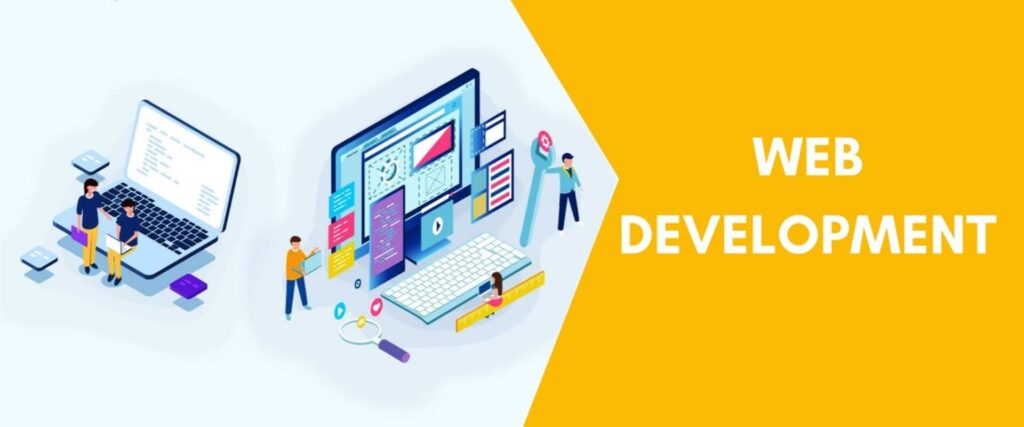
Ultimate Ways To Transform The Digital Skills Of Your Workforce.

Table of Contents
The digital age requires a new set of skills that employees must be able to handle to stay relevant. Education systems can be the key to obtaining these skills and the future of our workforce.
Typically focused on how we will have more opportunities than qualified workers or how most workers will have to adapt their skills to stay employed. The growing need for education isn’t just about working or not working. It’s about a fundamental change in what is required from employees.
Businesses are increasingly looking at how they can manage their workforce shortly. As an employer, you need to rethink your company’s digital skills to stay relevant and competitive in the markets.
Technology is changing how people work, with many companies looking for ways to optimize workflow and generate more value from employees. One such way is through workforce transformation: when a company shifts their operations and management significantly or discontinues its operations altogether in favor of automation. |
Businesses that have started transforming itself to rely on AI for everything from chatbots to customer service agents.
The world of work has evolved dramatically over the past years. As technology and digital skills improve, it will soon be time to introduce a new kind of worker – the human-plus-machine.
A human-plus-machine worker is a person who can operate in a mixed reality environment performing tasks that are appointed by the robot but can take on other tasks if required. This new skill will require workers to have a deep technical understanding and advanced skill sets in computer science, programming, wearables and robotics.
- Why would it be beneficial to invest in Digital Transformation?
The arrival of digital transformation has meant that organizations are constantly adapting and growing their business in a competitive environment.
Businesses can now grow at a faster rate than ever before by investing in digital transformation and exploring new opportunities.
In the past, businesses were limited by geography, but with technology, companies can now expand globally. Businesses can now move from being competitive to being the market leader. Digital transformation allows companies to innovate, create and share content, and engage with customers in ways that were not possible before.
Investing in digital transformation can help businesses to increase productivity and improve their ROI. It also improves customer experience. Digital transformation is the current trend in the industry. It will allow you to make your company competitive.
You should use digital transformation for innovation, create new products and offer better customer service using data insights.
1.1 The Management Process
Leadership, strategy, and culture are part of the digital transformation process’s mentality phase. True leaders serve as role models. Adopt a digital-first strategy for your company, starting at the top and moving down. According to the MIT Sloan Management Review, companies with digitally savvy senior management experienced a 48 per cent increase in market valuation and sales growth. Digital technology may be quite effective at fostering communication, and avenues for employee engagement include social media, tools for change management, and real-time feedback. Many frontline staff may be unclear of their place in the change process, while top managers may be aware of it.
Helping employees understand how their participation can contribute to change and how it affects the operation of the business. Because they are in the best position to pinpoint the skills and skill gaps of the company’s workforce, human resources (HR) may assist in driving this process.
Investing in employees is a kind of empowerment since happy employees are more likely to feel valued and acknowledged by their employers. Bring your leadership team up to speed on digital skills, and then help your managers emerge as the new tech leaders of the business. Your office will be digitally simplified once the workforce has embraced it.
1.2 The Skillset
Even if many millennials work in the digital sector, firms face a severe skills gap. The shift to digital is now ongoing. Once one type of software is mastered, a different type or a better technique emerges. Get ready to research cutting-edge digital technology. The abilities required to use digital technologies advance together with the technology itself.
The most effective methods for learning new technologies are typically the traditional ones. Printouts may be a very beneficial learning tool for your expanding digital workforce. Print can help your company’s employees develop new digital habits and abilities while bringing everyone on the same page. Knowledge is a gift that shouldn’t be feared. Knowledge is accumulated throughout life.
1.3 Apposite Tools
The finest solutions are occasionally digital tools like Google Docs and Microsoft Office. You might require a webinar platform to enable corporate-wide online meetings as remote workers multiply. There are many different ways to learn new things. Videos, webinars, a live Q&A session at the end, and student support networks could all significantly improve a digital skills training programme.
In conclusion, the additional advantage of digital technology is its ability to track what and how people learn. An email might be used to re-encourage individuals who are having trouble with the project, and it could be used to recognize and encourage those who are making quick progress. Employees can assist a company in becoming more digitally mature and a digital leader if a digital mentality is supported in the company’s culture.
- Upskilling Drive for Digital Transformation.
Many reasons drive companies to upskill and, in turn, to adopt digital transformation. This paper will highlight some of the most common ones, such as cost efficiency and greater agility. The paper will also discuss the risks associated with not upskilling, particularly the inability to compete in a marketplace.
The introduction should address the reasons for an upskilling drive for digital transformation.
It has been reported that many companies are looking to invest in digital transformation programs. One of the major driving forces behind this is an increasing demand for employees with skills in the digital arena. However, there is a lack of talent who possess these skills, and companies need to face up to the challenge and necessary investment if they are going to succeed in the future.
Unfortunately, many CEOs lack an understanding of digital transformation. They are not digitally native and have a limited vision of what the workplace will look like.
But few CEOs understand that today’s workforce is global and connected 24/7. They require global leadership instead of geographical leadership.
2.1 Increase Employee Confidence
Employees are among the many people who fear change. The idea of an organization undergoing a significant digital transformation overwhelms employees and leaders. Although it could appear intimidating, workers also gain experience after honing their talents. It also makes the workforce more cohesive.
An organization needs knowledgeable employees and effective leadership communication. The employee’s productivity will rise as they gain more work confidence and experience. Learning digital skills also motivates workers to stay on the job. Employees that have undergone upskilling are also aware of the importance of transition and its advantages for the business and its clients.
2.2 Better Change Management for Your Organization
Upskilling not only assists in preparing your staff for new or existing jobs but also enhances the working environment. Your staff will become more flexible and change-ready once they embrace continuous learning. A quick learner with the flexibility to keep their job on the line is needed in today’s economy.
Additionally, it improves employee engagement, loyalty, and satisfaction. Additionally, they acquire skills that will prepare them for the future and improve their chances of business success. An agile organization can handle any uncertainty, and the necessary precautions can be taken to reduce risk.
2.3 Engage and Retain Productive Employees
Your organization will change the way you work if you implement upskilling. Your tech talent will work more effectively as a result of the replacement of old tools. Additionally, it promotes staff retention and engagement. For employees, career advancement is essential. You can grant the wishes of workers seeking a dynamic work environment by adding new talents. Giving people options for employment lowers the likelihood that they will leave their position. You won’t need to start over when you have existing employees.
- Ways to Transform the Digital Skills of Your Workforce.
3.1 The digital skills of our workforce are evolving.
Today almost every business has some digital person on their team, whether managing social media or helping create e-commerce websites.
So what are the most popular skills in the workplace today? And how can you gain them?
Some common skills include Microsoft Office, Salesforce administration, cloud computing security and management, data analysis and visualization and more.
As industrialization quickly brings the digital revolution to life in all industries,
companies are faced with a new challenge: how to transform the workforce.
The digital revolution is changing how companies do business and how they bring together their teams, and it is important that they prepare accordingly. What does the future of work look like?
This section will explore how companies can prepare for this impending change.
The future of digital skills relies on creativity, knowledge and innovation. It is easy to see how a workforce trained in these areas can bring their expertise to any new digital skill or challenge.
Ultimately, the digital transformation of a workforce will come from the imaginative and innovative use of technology. With this in mind, businesses must invest in education and training so that their employees are up-to-date with digital skills.
3.2 Maintain a Balance Between Employee Skills and Technology
When workers have access to the right technology and tools, the training they need, and the freedom to experiment, learn, and improve procedures, they work more effectively. This can be put into perspective by thinking of freedom inside a framework.
Beyond the framework or decision rights that employers supply, employees must be free to redefine and reinvent their work to get the most notable results. Employees need to know more than just how to use technology at work to be productive in the digital age.
3.3 Assess The Team’s Digital Needs
What programmes and tools will make your life easier and more productive? Chart software, perhaps? Monitoring time? Pay attention to routine actions and procedures. Start by assessing your digital assets and where you want them to be in the future.
How can you improve your digital marketing tactics, such as sales, customer service, business automation, and others? Are the right people in place to utilize the technology? To enhance your workplace, develop a step-by-step plan based on the digital demands of your workforce.
3.4 Assign New Roles To Employees, Not Just New Tasks
Many managers think that people will miraculously comply with our requests by changing the system, structure, and procedure. This involves a focus on how employees’ duties alter. Still, little attention is paid to how employees perceive a change in their job roles and the emotional energy needed to handle that transition.
However, if any of these are neglected, it is doubtful that staff will effectively employ new technologies to provide the required results.
Three different types of questions must be asked to adapt to changes.
a. What are additional abilities (attitudes, skills) needed to master the new work?
b. How are obligations and roles changing?
c. How well are people observing and managing their emotions at each stage?
3.5 Do proper onboarding
This step is commonly ignored but is essential for improving your staff’s digital proficiency. Onboarding is the process of making everyone familiar with the rules and expectations of your company.
New employees must feel comfortable using new technologies and carrying out their jobs. Give them some time; it can seem like a lot for them to process at once. Please give them the tools they need to do each assignment successfully. One of these tools is a thorough onboarding procedure that offers a suitable welcome to the organization.
3.6 Prepare for continuous learning.
The process of digital transformation is ongoing. When you master one piece of software, a new or better method emerges. To be on the bleeding edge of digital technology, be prepared to study continually.
Sometimes using paper and a pencil from the classroom is the greatest method to learn new technology. Printouts can be a useful learning tool for your developing digital workforce. When establishing new digital skills and workflows, the print has real influence and can put your team “on the same page.”
Conclusion
In conclusion, while developing your team’s digital skills will take time, it will be worthwhile.
The learning curve isn’t as difficult as it first appears, and the time and money you invest in training and tools will pay off with a more intelligent and skilled staff.
That is a priceless asset that will develop alongside your business.
Share Article:
Table of Contents


Effortless Inventory Control: Streamline Your Business with Our Customer-Centric Inventory Management Solution

Transform Your Online Presence with Premier Web Development Services in California


Related Articles

Navigating the Digital Classroom: The Future of Online Learning Management Systems

Effortless Inventory Control: Streamline Your Business with Our Customer-Centric Inventory Management Solution

